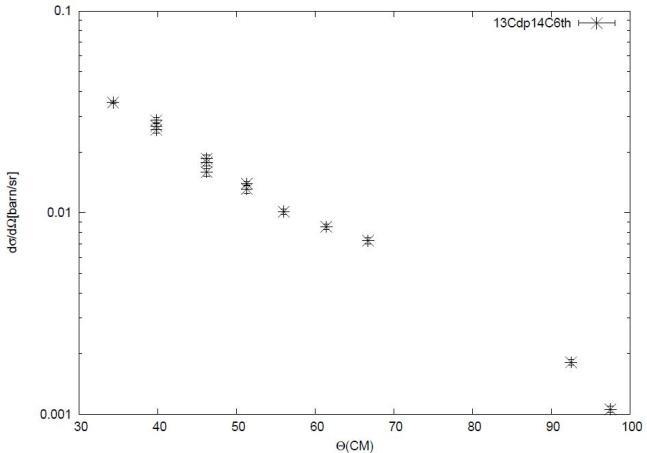Introduction to "P3
2007"
2007 P3's Homepage (Japanese)
Nucleus consists of two component, proton and neutron. Proton has an
electric charge,
but neutron is neutral particle. But their mass is very
similar.
In
some senses they are the same particle, but different states.

Analogy of spin, it is called isospin.
Proton's isospin is + 1/2, and neutron's isospin is - 1/2.
Of course, in electromagnetic interaction their property is different.
But, nuclear force, which makes possible to combine nucleons,
proton and neutron acts as if they are the same particle.
So if electromagnetic interaction is negligible,
the neuclei with the same number of nuclons has very similar structure.
Our reserch's purpose is to examine isospin symmetry.
To see the neuclei's structure, we observe the excited states of isomultiplet.
If they have similar structure, their energy spectra must be very similar to each other.
The principle of this experiment is very simple,
to collide a certain energy of particle with the target nuclei,
and observe scattering particle's energy.
Observed several peak (elastic and inelastic scattering) corresponds
to nuclei's ground and excited state.
We use tandem Van de Graaf accelerator in this experiment.
The merit is very fixed beam energy, and its intensity.
In this experiment, we observe three isodoublet A = 11,13 and 27, one isotriplet A = 14.
But not all the multiplet nuclei are stable or handy,
we make unstable nuclei by stripping and pick-up reactions.
For example, we want to observe the excited state of
14C, but it is difficult to use as a target.
But, 13C target is stable and we can use.
We use deutron as a beam, and observe proton, it is called stripping reaction.
In this reaction, a neutron is stripping from the
projectile and captured by 13C nucleus,
so 14C nucleus is synthesized.
Besides measuring excited energy of 14C,
we can determine which
single-particle state neutron captured,
from measurement of the angle
dependence of the differential cross section.
It can be calculated from
DWBA(Distorted Wave Born Approximation).
Using either stripping and pick-up reaction, we must identify scattering
particle.
We use E - dE method. This method requiares two SSD, very thin one
and thick one.
The former is called delta E counter, and here particle only
lost little energy.
The latter is called E counter, and here particle lost
all energy after passing delta E counter.
The energy loss in delta E counter
depends on the total energy and particle.
It is possible to calculate from
the Bethe-Bloch formula.
Different particle but the same energy lost
different energy in delta E counter,
so we can identify the particle and reaction.


